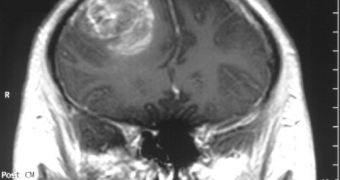For years, oncologists have been trying to figure out how glioblastoma – an extremely aggressive and deadly form of brain cancer – develops in the human body. In a new research, scientists were finally able to discover a mechanism that previous investigations never even hinted at.
One of the main directions of research in figuring out this illness was to analyze gene transcription. This process is responsible for copying genetic information is copied from DNA to RNA, and leads to the formation of specific proteins.
Neuroscientists have always suspected that gene transcription played an important role in the development of glioblastomas, but the new investigation, by experts at the University of Texas Health Science Center (UTHSC), in San Antonio, suggests that a follow-up mechanism may be to blame, too.
They directed their efforts towards figuring out if and how post-transcriptional regulation is involved. They were able to determine that this mechanism is at least as important in underlying the development of glioblastomas as gene transcription.
Figuring out how to address this form of cancer is extremely important, since it kills people it affects within a few months. Only a very small percentage of those who manage to survive these first few months make it on to live with the condition for more than 5 years afterwards.
Researchers say that understanding the molecular mechanisms that favor the development of such tumors could lead to the development of new treatments, which could potentially be extended to other forms of cancer as well.
The difficult aspect of creating drugs aimed at brain cancers is that the chemicals need to be developed in such a way that they are able to pass the blood-brain barrier, a construct designed specifically to keep everything that does not belong in the brain out of it.
Details of the new investigation appear in the latest issue of the American Association for Cancer Research (AACR) journal Molecular Cancer Research. The research team was led by UTHSC Department of Cellular and Structural Biology assistant professor Luiz O. F. Penalva, PhD.
The team was able to demonstrate that Musashi1 and HuR, two RNA-binding proteins, interact in a way that may have important implications for how the brain cancer develops. “This is a novel finding in terms of what we know about glioblastoma development,” the team leader says.
“Most of what we know about glioblastoma is limited to gene transcription-level research, but there are other regulatory processes beyond transcription that when disrupted could contribute to tumor formation,” he concludes.

 14 DAY TRIAL //
14 DAY TRIAL //